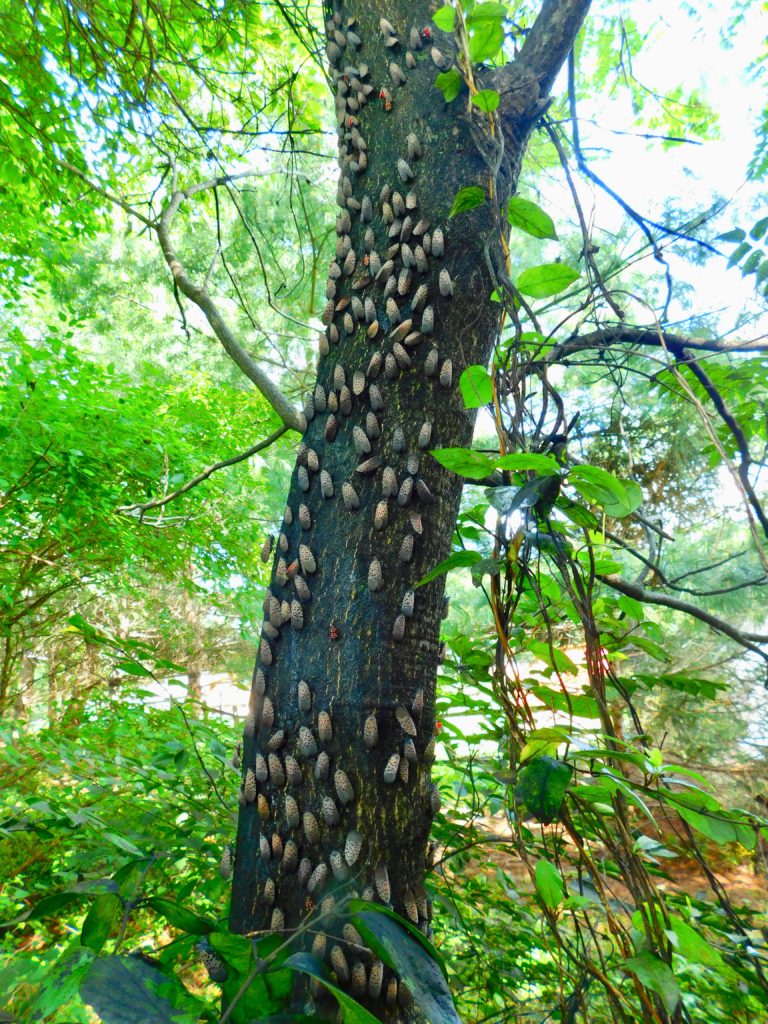Spotted lanternfly is here and continuing to spread across the states. If it continues, the impact could be devastating.
Recently, Don Grosman, Arborjet Entomologist, attended two spotted lanternfly (SLF) summits. The first was the “Spotted Lanternfly Green Industry Summit,” hosted by Bartlett Tree Experts at their Research Lab in Charlotte, NC on February 27-28. Over 50 federal, state, university and industry professionals were in attendance. Speakers provided overviews of current knowledge on spotted lanternfly biology, plant/insect interactions and potential for biological control; federal and state actions; and insecticide efficacy trials (including those conducted by Don Grosman). This was followed by open discussion and roundtable to review SLF management calendar/recommendations for green industry, research gaps and plans for 2019 research and funding opportunities.
The second meeting attended was the “Spotted Lanternfly Regional Summit,” hosted by the Pennsylvania Department of Agriculture in Harrisburg, PA on March 6 and 7. This meeting attracted more than 100 people to learn and discuss all things spotted lanternfly. More than 20 speakers presented on Operation, Research, Communication, Regulation and Extension topics. This was followed by break-out sessions on Research, Operation, Regulation and Communication to discuss current and future needs.

Much information was passed and discussed by participants. Some new and interesting information provided included:
- There are now five states (PA, VA, DE, NJ and MD) with established populations of SLF. Three other states (NY, CT and MA) have found dead SLF adults that had been transported into these states in vehicles or potted plant material.
- Tree of Heaven (Ailanthus) is the favored host of late instar and adult SLF, but walnut, birch, maple, tuliptree, willow, hop and grape (wild and cultivated) are also highly attractive.
- So far, there have been two potential natural enemies (parasites) discovered in the SLF native range and two fungal pathogens discovered in PA. Much research and time is still need to evaluate these natural options. Operational use of any of these options will be 3-4 years in the future.
- Recent insecticide efficacy trials indicate that single spray applications of contact insecticides (bifenthrin, carbaryl, and imidacloprid) are effective, but do not hold up for the full season.
- Efficacy of systemic insecticides (imidacloprid and dinotefuran) applied via bole spray or soil drench was inconsistent and/or short lived. Also, there is concern that these chemicals will contaminate area ground water.
- Don Grosman found that systemic injection treatments (imidacloprid (IMA-jet) in particular) provided full season protection by killing feeding SLF nymphs and adults, thus reducing numbers on trees and honeydew and sooty mold production.
- Moderate protection was provided by injections of AzaSol (azadirachtin) and ACE-jet (acephate).
Additional field trials are planned to further evaluate two experimental products that showed some promise in preliminary trials last year.
Stay tuned for more on Spotted Lanternfly…
